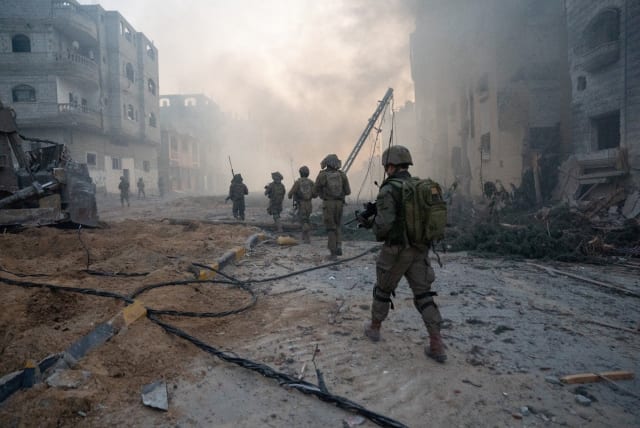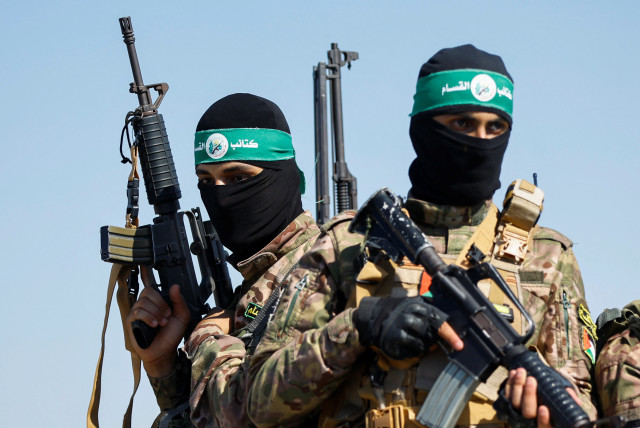The Netzarim corridor has become a magnet for Hamas attacks - analysis

Even if the attacks don’t harm anyone and not all of them are reflected on the ground the way Hamas describes them, they symbolize the way Hamas wants to wage the next phase of its war.
The Netzarim corridor, an area of IDF control that cuts across Gaza from near Kibbutz Be’eri to the sea, has become a magnet for Hamas claims of attacks.
Pro-Iranian media, such as Al Mayadeen, include reports every few days claiming that Hamas has targeted the corridor. This illustrates how Hamas is thinking about its current operations in Gaza. The reports indicate Hamas is coordinating with other terrorist groups in Gaza to target the corridor.
For instance, on May 8, Al Mayadeen reported on Hamas attacks and activities in Gaza. This is likely based on Hamas statements directly to this media group. Among the claims, Hamas said that “in conjunction with confronting the ground incursion of Israeli forces into Rafah, the resistance continues to intensify its operations on the ‘Netzarim’ axis.”
The report says the “military media of the al-Qassam Brigades [Hamas] published scenes documenting the targeting of the occupation headquarters in this axis, in conjunction with the Martyr Jihad Jibril Brigades, the military wing of the Popular Front for the Liberation of Palestine, General Command.”
This is important because it joins other reports where Hamas has highlighted the role of its own terrorist cells alongside those of Palestinian Islamic Jihad, the al-Aqsa Martyrs' Brigades, and also the National Resistance Brigades of the DFLP.
This is not a small matter because it illustrates how Hamas wants to highlight the role of these other groups. This could be for Hamas to show that it is working in solidarity with other Palestinian groups, rather than suppressing or sidelining them.
Hamas may be doing this to further its chances of working with these same groups in the West Bank in the future to coordinate attacks. On the other hand, Hamas may be relying on these groups because it lacks the forces it used to have in Gaza.
What the continued reference to the Natzarim corridor illustrates
The continued reference to the Netzarim corridor shows how this area of IDF presence has become a magnet for attacks. This is, in part, because the IDF withdrew from other areas in Gaza. For instance, the IDF withdrew from much of northern Gaza in January and February. Then in April, the IDF withdrew its 98th Division from Khan Yunis.Leaving the Netzarim corridor meant that Hamas could return to most of Gaza and begin to coordinate openly against the IDF. The IDF has deployed two reserve brigades in the corridor after withdrawing the Nahal brigade in late April.
On May 7, the IDF said “ground troops continue to operate in the central Gaza Strip corridor. During the operational activity, the troops identified a terrorist cell entering a military structure in the area. IAF fighter jets struck and eliminated the terrorists.” Hamas is focusing on this area.
Hamas appears to be seeking to return to a classic type of terrorist insurgency by targeting the corridor. What this means is that Hamas feels it has freedom of movement in most of Gaza and it chooses the time and place of attack. It is also using this for propaganda purposes.
With setbacks in eastern Rafah, where Hamas did not appear to strongly oppose the IDF operation so far, the terrorist group can instead focus on areas where it feels it can brag about attacks. Even if the attacks don’t harm anyone, and even if not all of them are reflected on the ground the way Hamas and the terrorists describe them, nevertheless they symbolize the way Hamas wants to wage the next phase of its war.
Hamas appears to believe that eventually these harassing attacks will lead to victory and the IDF will leave Gaza.
Jerusalem Post Store
`; document.getElementById("linkPremium").innerHTML = cont; var divWithLink = document.getElementById("premium-link"); if (divWithLink !== null && divWithLink !== 'undefined') { divWithLink.style.border = "solid 1px #cb0f3e"; divWithLink.style.textAlign = "center"; divWithLink.style.marginBottom = "15px"; divWithLink.style.marginTop = "15px"; divWithLink.style.width = "100%"; divWithLink.style.backgroundColor = "#122952"; divWithLink.style.color = "#ffffff"; divWithLink.style.lineHeight = "1.5"; } } (function (v, i) { });

